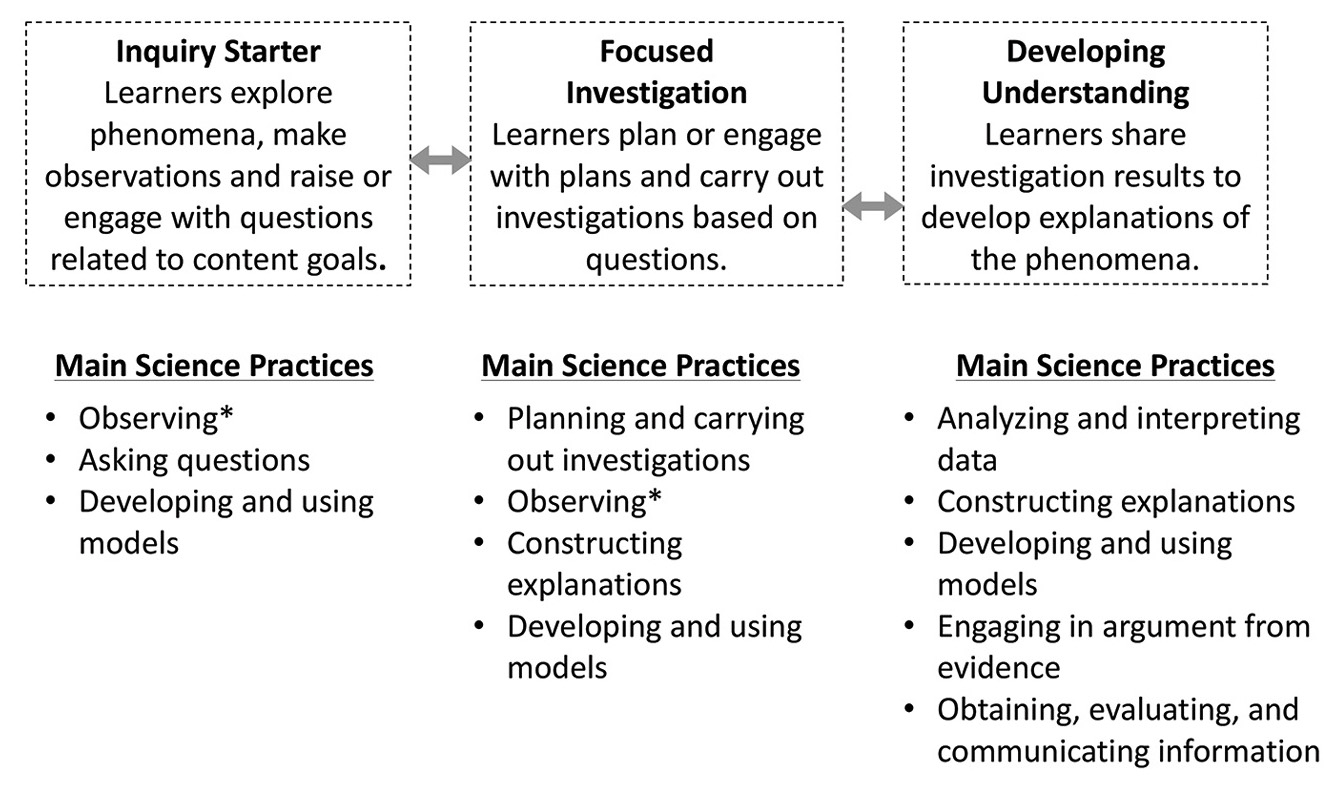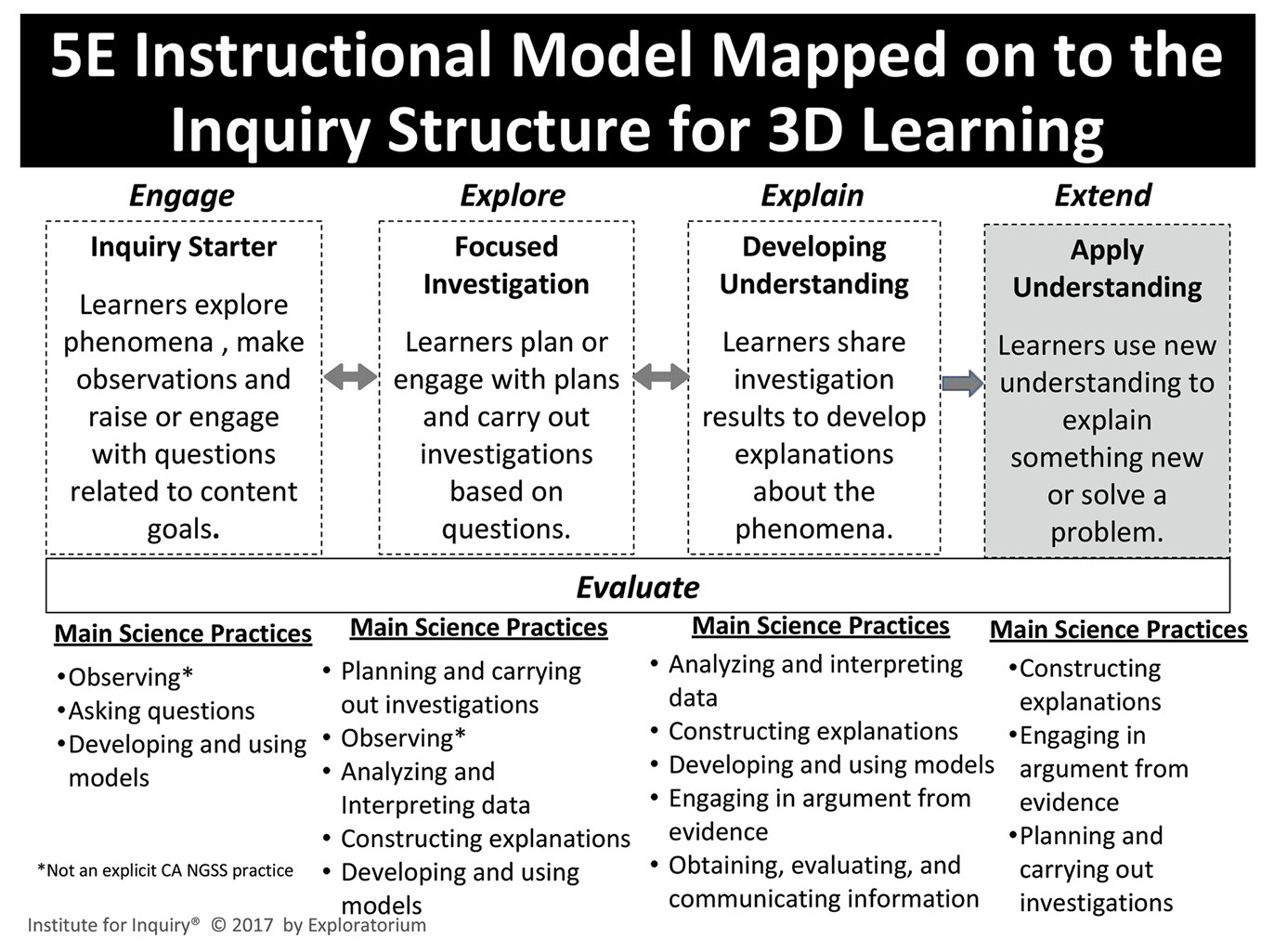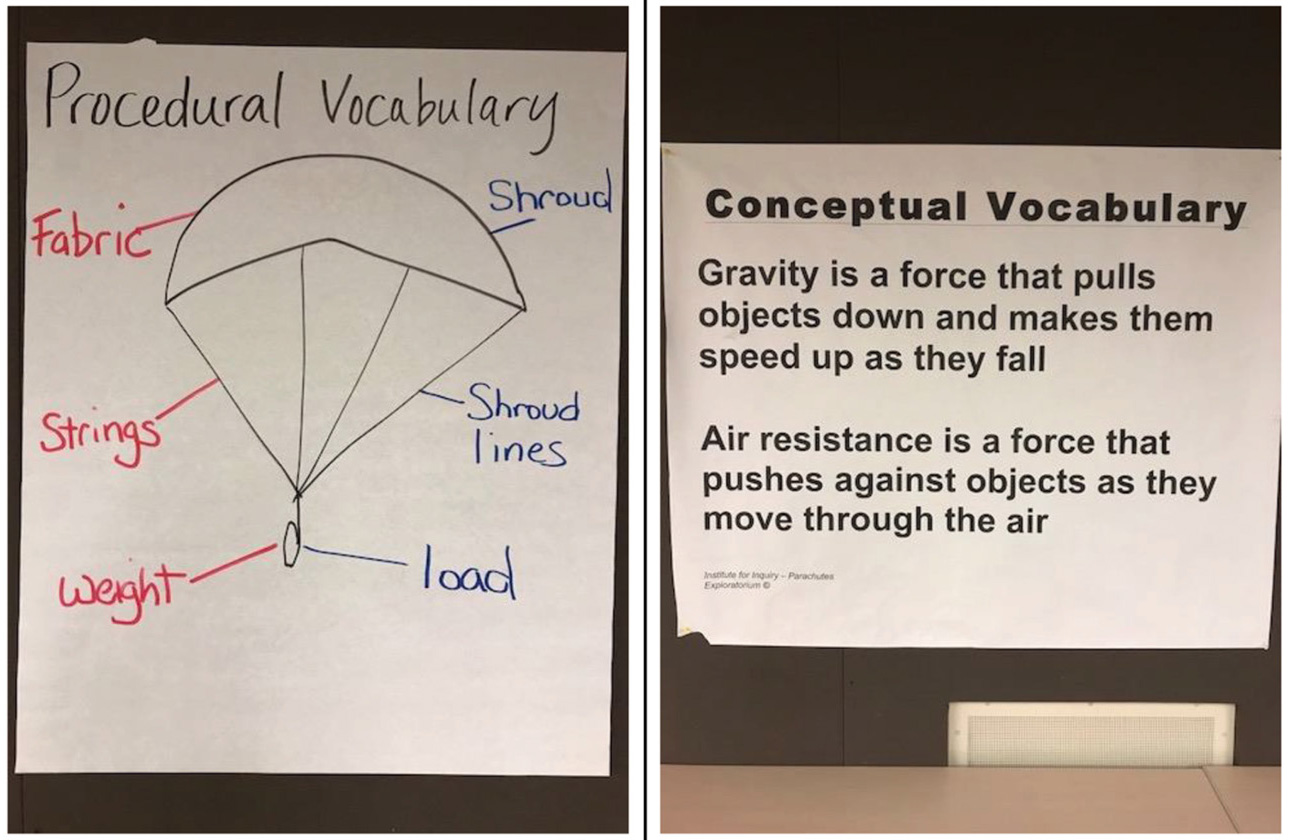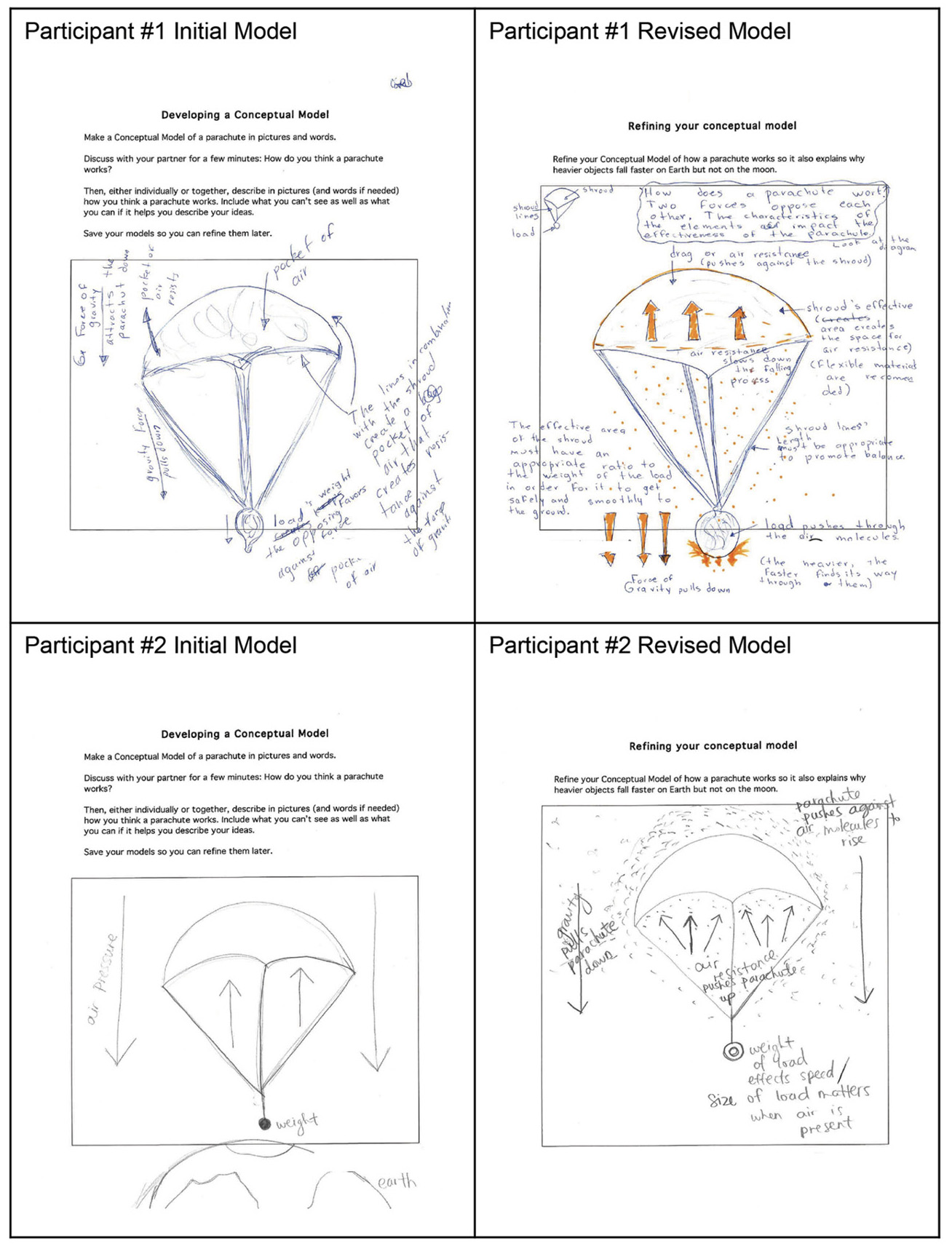Teaching Teachers
Not Your Average Parachute
How we transformed our parachutes investigation to capture the vision of the Next Generation Science Standards
Science and Children—September/October 2021 (Volume 59, Issue 1)
By Kelsey Lipsitz, Fred Stein, Lynn Rankin, Barry Kluger-Bell, and Rachel Jordan
Elephant Toothpaste. Egg Drop. Balloon Rockets. Dissolving Lifesavers. Parachutes. Sound familiar? Who hasn’t experienced and loved one of these popular elementary science activities? However, with the introduction of the Next Generation Science Standards (NGSS), three-dimensional (3D) learning has taken center stage. Three-dimensional learning occurs when disciplinary core ideas (DCIs), science and engineering practices (SEPs), and crosscutting concepts (CCCs) work together to help students explain phenomena and solve problems. This requires a shift in science instruction from “learning about” to “figuring out” phenomena encountered in the natural world. NGSS-aligned curricula offer a means of supporting teachers as they incorporate 3D learning in their classrooms, but do their favorite, kit-based activities have to be abandoned entirely? In this article, we demonstrate how our team transformed one of these popular activities to reflect the vision of the NGSS.
Institute for Inquiry
Our team at the Exploratorium’s Institute for Inquiry has supported inquiry-based science teaching and elementary educators for over 40 years. While inquiry has been a fundamental approach to science education for years, the inclusion of the science and engineering practices (SEPs) in the Framework for K–12 Science Education (NRC 2012) and the NGSS further articulate what is meant by inquiry. Recently, our team has partnered with professional learning providers across California as they help their teachers implement science instruction that aligns with the vision of the NGSS. Through this work, we have the opportunity to engage these educators in activities that help participants understand the fundamental nature and elements of 3D learning and to motivate them to find ways to help teachers develop a more 3D approach to teaching. We present one such activity about parachutes that enabled our participants to think about one way to make the shift from more traditional, kit-based activities to NGSS-aligned activities. While the activity is intended for professional learning providers, it is designed so that teachers could use it in their classroom with a few modifications. The full professional development (PD) activity takes about three to four hours, while the classroom version would take about four to six lessons. A facilitation guide for the PD activity and for a classroom version is provided in a shared Google Drive folder (see Online Resources). Although the activity can be modified for elementary classrooms, the article is designed to help readers get a better understanding of 3D learning and how shifts can be made to existing lessons to better reflect the vision of the NGSS.
Parachutes: The Original
Parachute investigations are classic kit-based activities going back to the 1960s SPACE curriculum from Great Britain and still used today in FOSS, Engineering is Elementary, and other curricula. Part of the appeal lies in the simplicity of the materials and the complexity of the phenomena. Prior to the NGSS, we used a parachutes inquiry activity to familiarize our PD participants with inquiry and science process skills. In the original inquiry, educators began by working in groups, dropping a standard parachute, and sharing observations and questions about parachutes. Then, they developed a question to investigate using additional materials and planned and carried out an investigation with the help of a facilitator. Finally, each group shared their investigation results with the class, and a facilitator presented a synthesis of the investigation findings (a brief summary of participant’s insights and their relation to the main science ideas about the topic). Through this process, learners used the science process skills to ask questions, plan and carry out investigations, develop and test explanations, analyze and interpret results, and communicate understanding. While learners walked away with new or expanded content knowledge (as determined by the National Science Education Standards), the main goals were to become familiar with inquiry and learn science process skills.
Our Inquiry Structure
Before describing how we repurposed the parachutes inquiry to reflect a 3D learning experience, we present our Inquiry Structure for 3D Learning that serves as a map of our approach to inquiry as well as a guide for activities (Figure 1). Our approach is designed to enable learners to make sense of new phenomena. While this process is driven by the learner’s curiosity and sustained by a sense of ownership, curiosity and ownership are not always enough to ensure that learners have productive experiences that lead to deeper learning. A well-thought-out structure and guidance by a teacher gives shape and direction to curiosity within the context of a teacher’s learning goals. We recognize that our structure is one of many structures for inquiry but believe it is well aligned to the vision of the NGSS as well as to other pedagogical approaches used by elementary teachers, such as the 5E Learning Cycle (Figure 2). Several 3D elements were added to and/or enhanced in the initial Parachutes inquiry to better reflect the vision of the NGSS. These elements are described in more detail in Table 1.


A Narrative of the 3D Parachutes Activity
Similar to how educators use the Inquiry Structure to guide their inquiry activities, we use the Inquiry Structure to guide readers through our description of the 3D parachutes activity to provide a clearer picture of what the activity looks like with the addition of the 3D elements described above.
Inquiry Starter (~50 minutes)
We begin our 3D Parachutes activity by sharing the goals of the activity. Again, the main goal of the inquiry-based activity is to better understand the NGSS and more specifically, 3D learning, so our professional learning providers can help move teaching toward the vision of NGSS. While the main goal of the activity is to better understand the NGSS, this activity also has connections to the Common Core through the use of discourse and various math concepts (e.g., weight of parachute) and practices (e.g., using tools strategically). We also contextualize the activity by sharing the PE and situating it within a larger storyline.
To anchor the investigations around the PE, we share a video clip about a motorcyclist parachuting into the Grand Canyon and ask participants the question, How do you think parachutes work? Following this initial introduction to the anchor phenomenon, we engage our learners in a prior experience science talk during which participants use everyday language to share previous experiences or stories related to the phenomenon that may be of value to everyone during the investigation. For example, some participants share their experiences seeing Nascar races, playing parachute games, or with parachute toys. We also introduce procedural vocabulary to ensure all learners have some common language for how to talk about the parachutes as they investigate (see Figure 3); we do this to model a generalizable strategy to help teachers distinguish vocabulary to be frontloaded from conceptual vocabulary better introduced after enough experience.

To begin, participants are asked to make a standard parachute and test it to see how it falls when dropped from a height. After the testing of the initial parachute, participants state observations, make an initial model showing how they think parachutes work and raise questions about parachutes they can investigate in the next phase.
Focused Investigation (~50 minutes)
During this phase of the activity, learners plan and carry out investigations in small groups to try to answer a question of their choice. We present a mini-lesson on the crosscutting concept cause and effect by sharing a sentence frame, “_____ (cause), so _____ (effect).” Using this sentence frame, participants use multiple cause-and-effect relationships to explain the mechanism at work. For example, as an open parachute falls, it has to spill air from under its canopy, so it usually spills out one side, so the parachute rocks. This encourages our participants to think about cause and effect as a sensemaking tool. At this time, we also present conceptual vocabulary (i.e., gravity, air resistance) because by now, learners have enough experience to make these terms meaningful (Figure 3). Depending on participants’ existing knowledge, the facilitator may need to provide additional background information or an expanded definition of the term gravity (e.g., On or near the Earth’s surface, gravity is a force that pulls objects down and makes them speed up as they fall).
We provide groups with a planning template that asks them to identify their questions and the materials they will need, as well as the (at least first) steps they think will help answer their question, and suggestions for controlling variables. As groups are investigating, our facilitators check in with groups. During this time, they listen, watch, and ask questions to push and evaluate their thinking (Figure 4).
Facilitator questions.
To push learners’ thinking by encouraging the use of science practices…
- What do you notice?
- Why do you think that’s happening?
- How could you test your ideas?
- Does your test confirm or challenge your ideas?
- How do you interpret your data?
- How could you communicate your understanding to others?
When testing more than one variable…
- I noticed your parachutes are different sizes. Do you think the size might make a difference and is that something you want to find out?
To help learners consider big ideas…
- What do you think happens to air when it hits your parachute?
- How do you think the way you built your parachute affects the amount of air it catches?
Developing Understanding (~95 minutes)
Once finished, each small group plans the most effective way to communicate their results and then shares with another group, giving everyone the opportunity to practice communicating their ideas. A science talk follows this initial sharing of results, during which learners continue to make sense of the phenomena they investigated. Before the science talk begins, our facilitator engages participants in a quick write so that participants have an opportunity to collect their thoughts around the focus question. Our facilitator kicks off the science talk by asking the question, “How do parachutes work?” Learners engage in the discussion around this question by listening and commenting on their peers’ ideas, while also providing evidence from their investigations. In this way, what participants learned during their investigations become part of everyone’s understanding. While science talks can be difficult to facilitate, our facilitators use a variety of talk moves and sub-questions to encourage rich discussion and to assess understanding of the science concepts (Figure 5). To conclude the science talk, the facilitator summarizes the main ideas brought up as well as any major unanswered questions.
Science talk facilitation hints.
- Allow the conversation to start (for the first 5–10 minutes) without any interventions on your part except to encourage people to talk if no one is volunteering.
- Keep track of the ideas that come up so you can encourage people to elaborate on them, especially if several people bring up similar ideas (you can take notes, which also gives you a way not to look at people if you find they direct their comments to you and not the whole group).
- If people ask questions or put forward opinions about how parachutes work, you can turn it back to the group by asking what others think.
- If the conversation does slow down, there are several things you can do:
- Ask the group to elaborate on a topic that has come up.
- Ask the people who have not spoken yet if they would like to say something.
- Have people do a turn and talk to their neighbor before opening it up to the whole group again.
- Ask a secondary or back-pocket prompt—consider questions related to what people may struggle with conceptually (e.g., There seem to be many variables that affect how a parachute falls. Which do you think have the greatest impact? What do you think happens to the air underneath?)
After the science talk, the facilitator leads a synthesis—a time toward the end of the investigation to relate participants’ insights and the main parachute concepts—to further support learners as they make sense of the phenomena. The synthesis helps participants organize or “synthesize” the ideas and experiences they have just had or heard about from others into a conceptual understanding of the phenomenon. The ideas shared during this time are not necessarily new but are meant to reinforce the concepts applied during their investigations and to connect their discoveries to the way these ideas are talked about in science (e.g., effective area affects air resistance). In PD settings, this is often done as a presentation due to time, but we tell participants that in classrooms, this can be more of a conversation. Finally, participants use all their earlier experiences to revise their initial conceptual models of how a parachute works (see Figure 6 for examples). To conclude the learner experience, we ask for several volunteers to share their initial and final models. Comparing initial and final models gives both participants and facilitators a chance to reflect on their learning.

Finally, we ask participants to discuss the experience from a teacher perspective. During this time, they consider the critical elements of 3D instruction and how they affected their learning. How do you think inquiry-based, 3D learning contributes to your understanding? What is the role of learner control of the SEPs? How did the structure of the inquiry-based, 3D instruction help you develop an explanation of phenomena? What role did social interactions play in the inquiry and how did they contribute to your learning? How do you think what the facilitator did helped increase your learning?
Conclusion
Together, all of the elements that were added to align the old parachute experience with NGSS increased the likelihood that more learners would develop their understanding of how parachutes work by providing more support for meaning-making and more access for students in linguistically diverse classrooms. In the original activity, participants engaged in process skills (now called science practices) to access the content. In the updated experience, learners were also given multiple opportunities for sensemaking (e.g., modeling, cause and effect, discourse) during which they developed their ideas about the content and worked to refine their answer to the question, How do parachutes work?
The parachutes activity is but one example of how kit-based activities can be modified to fit the vision of the NGSS. We encourage teachers to begin thinking about shifts they can make to their own valuable resources to better reflect 3D learning. However, we recommend thinking about these shifts in increments as opposed to trying to do all at once. And the good news is teachers do not have to abandon their favorite, kit-based lessons to do it! ●
Online Resources
Table 1. Tools for sensemaking: https://www.nsta.org/sites/default/files/journal-articles/S%2BC_SeptOct_2021/TT_Table1.pdf
Institute for Inquiry: https://www.exploratorium.edu/education/ifi
Inquiry-based Science and English Language Development resources: https://www.exploratorium.edu/education/ifi/inquiry-and-eld
Pathways to Learning: The Institute for Inquiry’s Approach to Teaching and Learning Science Through Inquiry: https://www.exploratorium.edu/sites/default/files/pdfs/ifi/Pathways-to-Learning.pdf
Foundations: Inquiry—Thoughts, Views, and Strategies for the K–5 Classroom: https://www.nsf.gov/pubs/2000/nsf99148/pdf/nsf99148.pdf
Facilitator’s Guides: https://drive.google.com/drive/folders/1N7njSKiihccT4YJFUHxk1lSA8f4apUMJ
Kelsey Lipsitz (klipsitz@exploratorium.edu) is a science educator, Fred Stein and Rachel Jordan are senior science educators, and Lynn Rankin is the Director of the Institute for Inquiry, all at the Exploratorium in San Francisco, California. Barry Kluger-Bell is an independent inquiry science education consultant based in Boulder, Colorado.
Crosscutting Concepts Disciplinary Core Ideas NGSS Science and Engineering Practices Teacher Preparation Teaching Strategies Elementary


